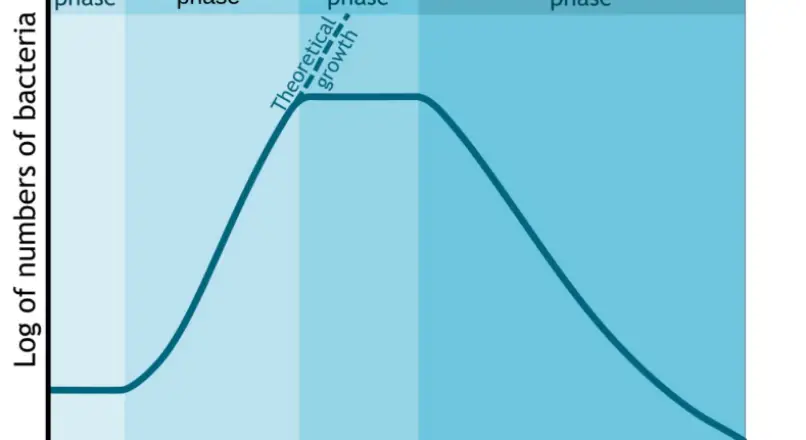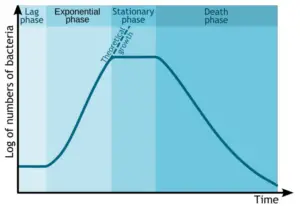
Best pH for the growth of Bacteria
Bacteria need the optimal condition for their growth. Bacteria grow best at optimum temperature, optimum pH and optimum redox reaction. Bacteria grow best at neutral pH. There are three types of classification on the basis of pH.
- Neutrophiles
- Acidophiles
- Basidophiles.
Neutrophiles:
These bacteria grow at neutral pH. They grow on the 6.5-7.5 pH ranges. The bacterial enzymes work best on neutral pH. For the metabolic activities, neutral pH is necessary. Almost all the pathogenic bacteria grow on neutral pH. When these bacteria shift to acidic and alkaline pH they stop dividing and their metabolism stop. Bacteria growth depend on the metabolism and cell metabolism depend on the functions of the protein. If the protein denatures, bacterial metabolism stops and cell death occur. When they grow at acidic and alkali pH,
- Their cell membrane ruptures.
- Their enzymes denature.
- Globular protein denatures.
- Metabolism stop
- Genetic material starts degrading.
Examples:
Some examples of neutrophils are as follows:
Staphylococcus aureus:
Staph.aureus is gram positive bacteria that are cocci in shape. They are non-motile, non-spore forming, catalase positive and oxidase negative bacteria. These bacteria can live in the presence or absence of oxygen, as they are facultative anaerobes. They grow best at temperature 7ᴼC-45ᴼC and optimum 37ᴼC. the pH range for the best growth of bacteria is 5.5-9 and optimum grow best at 7 pH.
They are normally present on the skin and cause contamination during mishandling. They are present in a high percentage in the nasal secretions and cause the contamination of food and cause disease when personnel is suffering from flu, pyogenic infections, sore throat and any skin infections. Their toxins are heat stable and remain active in normal cooking temperature. They become inactive when heat at 60ᴼC for 6 hours.
Identification:
For Staph.aureus identification, Baird Parker medium, Mannitol salt agar, staph110 is used. Baird Parker media is used commonly for the enumeration of staph. These media contain lithium chloride, egg yolk and potassium telluride that are specific for Staph.aureus.
Clostridium botulinum:
Cl.botulinum is gram positive rod-shape bacteria. They are anaerobic bacteria that grow in the absence of oxygen. They are spore-forming bacteria that produced terminal spore. Their spores are killed at 115ᴼC. Clostridium genus has two groups. The one is Proteolytic bacteria are the group that can break proteins. These grow at 10-48ᴼC and the other one is Non-proteolytic bacteria are the group that cannot break proteins. These grow at 4-40ᴼC. These bacteria grow at 4.6-8.9 pH ranges and grow best at neutral pH.
Their normal habitat is soil. The spores and vegetative bacteria cause the contamination of food during mishandling and poor environmental conditions.
Identification:
Cl.botulinum is identified by growing the bacteria on reinforced clostridial media. RCM media reduced the oxygen present in the environment and promote the growth of bacteria.
Salmonella enteritidis:
Salmonella are gram negative rod shaped bacteria. They are facultative anaerobes that can survive in the absence of oxygen. They are motile and non-spore forming. These bacteria grow best at 37ᴼC but the temperature range is 5-45ᴼC. These bacteria grow at 5.5 – 9 pH ranges and grow best at neutral pH.
They are present in the human gut and excrete through faeces. Sewage contamination in food leads to the contamination of foods. The sewage contaminations are due to pipe leakage and mixing of sewage water with the food.
Identification:
Salmonella-Shigella agar is used for the identification of salmonella. Salmonella gives pink colonies with the black dot on the centre of the colony.
Escherichia coli
E.coli is gram negative and rod shaped bacteria. They are motile and non-spore forming. It is the member of the Enterobacteriaceae family. They are also facultative anaerobes that can grow in the absence of oxygen. These bacteria grow best at 37ᴼC but the temperature range is 5-45ᴼC. These bacteria grow at 5.5 – 9 pH ranges and grow best at neutral pH.
They are the primary indicator of faecal contamination in the food. They are present in the human gut and excrete through faeces. Sewage contamination in food leads to the contamination of foods. The sewage contaminations are due to pipe leakage and mixing of sewage water with the food.
Identification:
Eosin methylene blue agar is used for the identification of E.coli. Eosin and methylene blue suppress the growth of other bacteria and E.coli gives green metallic sheen on EMB agar plate. This agar is selective for E.coli growth.
Listeria monocytogenes
Listeria is gram positive bacteria with rod shape. It is psychrotroph, facultative anaerobes. Some of the species are non-motile and some are motile. They are non-spore forming bacteria. These bacteria grow at 37ᴼC and at neutral pH.
Identification:
Half Frazer media is used for the identification of Listeria. This media is selective for listeria and contains the nutrients that promote the growth of bacteria.
Vibrio cholera
Vibrio is gram negative and curves shape bacteria. They are facultative anaerobes, motile and non-spore former. They have poor single polar flagella and give oxidase positive result. These bacteria grow best neutral pH and range of pH is 5-9. They need high salt concentration to grow i.e. 7-10% of salt for their growth.
They can be transmitted through sea water. They are present in the faeces and indicate the faecal contamination in food.
Identification:
As bacteria present in the sewage water and act as the coliform bacteria, it can be identified by using Total coliform bacterial count agar.
Campylobacter jejuni
Campylobacter is gram negative rod shaped bacteria. They are the most fragile and motile bacteria. It is the most fragile bacteria that can break when there is a small change in the environment. High salt concentration can degrade the bacteria. It is non-spore forming bacteria, curve shape bacteria and resemble S alphabet. They are Microaerophilic in nature and grow on low oxygen percentage. They grow best at 42ᴼC and more than 5 pH.
They are present in the GI tract of bird and their presence indicates the bird fecal contamination. It is the bacterium that most commonly causes food poisoning.
Identification:
Camp-cefix is used for the isolation of bacteria. Camp-cefix media contain cephalosporin that decreases the oxygen binding capability of bacteria. Cephalosporin is the heam provider for the bacteria and increases the growth of bacteria because campylobacter is Microaerophilic in nature.
Bacillus cereus:
Bacillus is gram positive, rod shaped bacteria and spore former. It produced central spores and spores that can tolerate even pasteurization temperature. It is facultative anaerobes that can grow best at 5-50ᴼC and 4-9-9.3 pH ranges. These bacteria grow at above 0.95 water activity and up to 10% NaCl concentration. This bacterium loves to grow on starchy food and grow best on rich carbohydrate source.
These bacteria are present in air and soil. This infection is commonly produced by using starchy food such as rice, potato and etc
Identification:
These bacteria grow at any media but selectively on mannitol salt agar supplemented with polymixin B antibiotics that kill the staphylococcus contamination.

